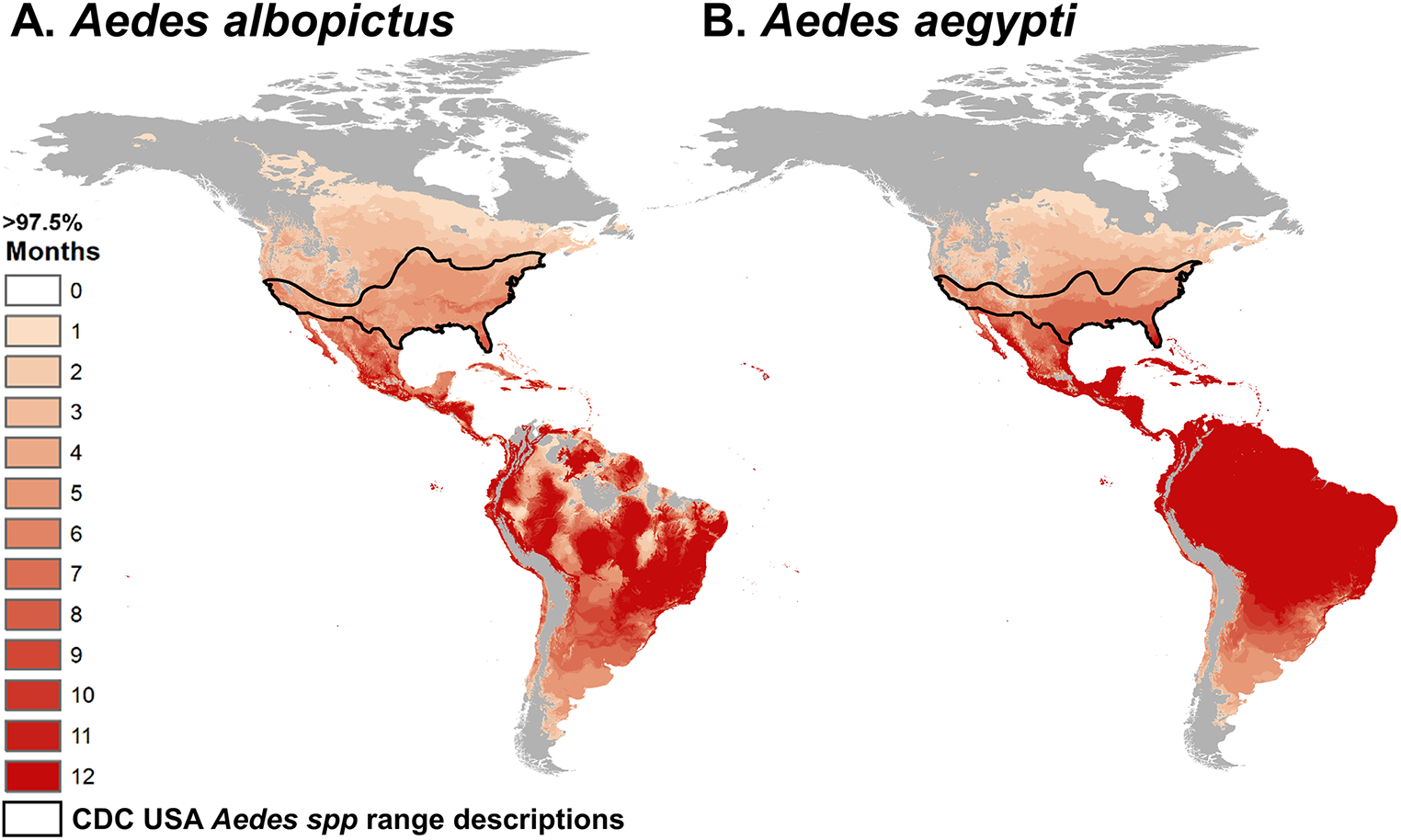
Understanding the drivers of recent Zika, dengue, and chikungunya epidemics is a major public health priority. Temperature may play an important role because it affects virus transmission by mosquitoes, through its effects on mosquito development, survival, reproduction, and biting rates as well as the rate at which mosquitoes acquire and transmit viruses. Here, we measure the impact of temperature on transmission by two of the most common mosquito vector species for these viruses, Aedes aegypti and Ae. albopictus. We integrate data from several laboratory experiments into a mathematical model of temperature-dependent transmission, and find that transmission peaks at 26–29°C and can occur between 18–34°C. Statistically comparing model predictions with recent observed human cases of dengue, chikungunya, and Zika across the Americas suggests an important role for temperature, and supports model predictions. Using the model, we predict that most of the tropics and subtropics are suitable for transmission in many or all months of the year, but that temperate areas like most of the United States are only suitable for transmission for a few months during the summer (even if the mosquito vector is present).
- Mordecai EA, Cohen JM, Evans MV, Gudapati P, Johnson LR, Lippi CA, et al. (2017) Detecting the impact of temperature on transmission of Zika, dengue, and chikungunya using mechanistic models. PLoS Negl Trop Dis 11(4): e0005568. [online]